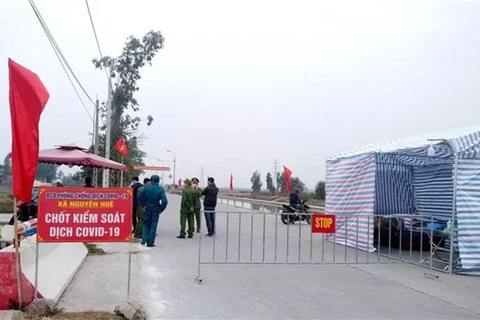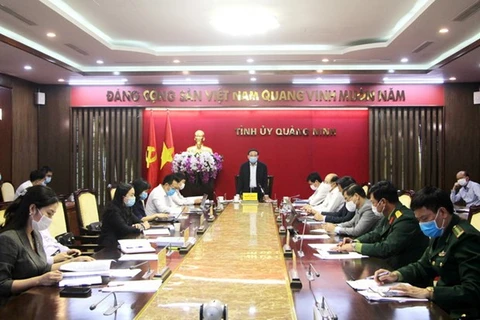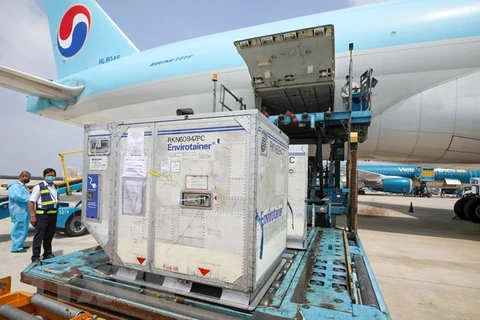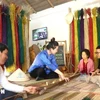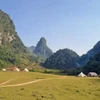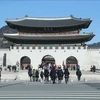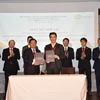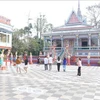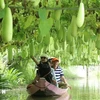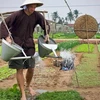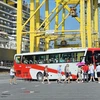 Quang Ninh opens tourism services for local visitors, with COVID-19 prevention measures put in place. (Photo: VNA)
Quang Ninh opens tourism services for local visitors, with COVID-19 prevention measures put in place. (Photo: VNA) Quang Ninh (VNA) – With the new wave of COVID-19 outbreak contained, the northern province of Quang Ninh officially reopened its tourism activities from 0:00 on March 2, starting with local tourists.
Travel firms and tourist sites are asked to ensure safety for visitors, and strictly follow the Ministry of Health’s 5K message of khau trang (facemask), khu khuan (disinfection), khoang cach (distance), khong tu tap (no gathering) and khai bao y te (health declaration).
Quang Ninh has put in place suitable measures to control those who come from pandemic-hit areas. It encourages all people coming to the locality to fill in health declarations.
The province creates favourable conditions for migrant workers to return the locality to work in the tourism and service sectors; however, they must follow the provincial Party Committee’s regulations on health declaration, quarantine, and testing, among others.
Ha Long, Uong Bi, Dong Trieu, Cam Pha and Quang Yen should apply necessary measures to ensure efficiency in COVID-19 prevention in the “new situation”.
As Van Don International Airport will resume operation on March 3, Quang Ninh province is outlining its new COVID-19 prevention process to ensure safety for the airport, its staff and the community.
About the reopening of bars and karaoke parlours, the local police are assigned to study and recommend the local People’s Committee on the time for the service resumption.
Quang Ninh announced on February 8 that it managed control the COVID-19 pandemic just in one week after it detected the first locally-transmitted infection on January 27.
Right after Chi Linh city of the neighbouring province of Hai Duong reported the first COVID-19 infections, Quang Ninh activated prevention and control measures with a view to containing the virus spread. It conducted mass testing, zoned off infected areas and quarantined people with a high risk of infection, helping reduce economic losses as well as stabilise the lives of local residents.
It was the first locality to carry out mass testing for COVID-19 so as not to leave out any F1 cases and miss travel history of F0 cases.
Particularly, the province has completed a map of safe zones to raise public awareness of safe and timely travel, as well as inform locals with travel history of confirmed cases, quarantine sites and medical facilities.
On Vietnam’s northern coast, Quang Ninh is building a community-based tourism development project that aims to welcome 1.7 million domestic tourists and 1.1 million international holidaymakers by 2025, with the local tourism sector earning 5.9 trillion VND (254.5 million USD) in revenue.
By 2030 it is to welcome 3 million domestic visitors and 1.8 million foreigners, with revenue reaching 12.1 trillion VND.
Community-based tourism is expected to generate 4,200 jobs by 2025 and 9,500 by 2030.
Quang Ninh is endowed with natural advantages for sea and island tourism. It has a coastline of more than 250 kilometres and more than 2,000 islands and islets which account for two-thirds of the total number in Vietnam.
It is home to popular destinations such as Ha Long Bay, Bai Tu Long, Ha Long Bay National Park and some islands.
In particular, Ha Long Bay literally “descending dragon” bay, was twice recognised as a World Natural Heritage site by UNESCO in 1994 and 2000. The bay spans 1,553 square kilometres and includes 1,969 islands of various sizes. It features thousands of limestone karsts and islets in various shapes and sizes. The limestone in the bay has gone through 500 million years of formation in different conditions and environments. The geo-diversity of the environment has created biodiversity, including a tropical evergreen biosystem, oceanic and sea biosystem./.
VNA

